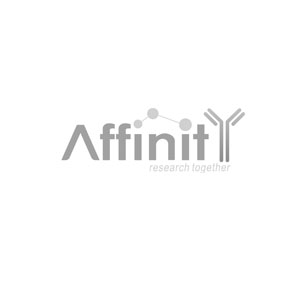Goat Anti-Mouse IgG (H+L) HRP - #S0002
| Product: | Goat Anti-Mouse IgG (H+L) HRP |
| Catalog: | S0002 |
| Source: | Goat |
| Application: | WB, IHC, ELISA |
| Reactivity: | Mouse |
| RRID: | AB_2839430 |
Product Info
Source:
Goat
Application:
WB 1:3000~1:10000, IHC 1:200, ELISA 1:10000~1:50000
*The optimal dilutions should be determined by the end user.
*The optimal dilutions should be determined by the end user.
Reactivity:
Mouse
Clonality:
Polyclonal
RRID:
AB_2839430
Cite Format: Affinity Biosciences Cat# S0002, RRID:AB_2839430.
Cite Format: Affinity Biosciences Cat# S0002, RRID:AB_2839430.
Conjugate:
HRP.
Purification:
affinity purification.
Concentration:
1mg/ml
Storage:
HRP-labeled Goat IgG in phosphate buffered saline (without Mg2+ and Ca2+), pH 7.4, 150mM NaCl. Store at -20℃,avoid repeated thawing and freezing.
Immunogens
Immunogen:
The antiserum was developed in goat using the mouse IgG as the immunogen.
References
1). Elucidation of Spatial Cooperativity in Chemo-Immunotherapy by a Sequential Dual-pH-Responsive Drug Delivery System. Advanced materials (Deerfield Beach, Fla.)
(PubMed: 38602707)
[IF=27.4]
2). Passively-targeted mitochondrial tungsten-based nanodots for efficient acute kidney injury treatment. Bioactive materials
(PubMed: 36185743)
[IF=18.9]
3). bHLH121 Functions as A Direct Link that Facilitates the Activation of FIT by bHLH IVc Transcription Factors for Maintaining Fe Homeostasis in Arabidopsis. Molecular Plant
(PubMed: 31962167)
[IF=17.1]
4). Binding of cellular nucleolin with the viral core RNA G-quadruplex structure suppresses HCV replication. NUCLEIC ACIDS RESEARCH
(PubMed: 30462330)
[IF=16.6]
Application: WB Species: human Sample: hepatoma cell lines
(B) G4 pull-down and Western blot. The fourth lane represents cell lysates directly used for western blot. β-actin was used
as an internal control.
5). TRβ activation confers AT2-to-AT1 cell differentiation and anti-fibrosis during lung repair via KLF2 and CEBPA. Nature communications
(PubMed: 39375377)
[IF=16.6]
6). Resistant Starch Nanoparticles Induce Colitis through Lysosomal Exocytosis in Mice. ACS nano
(PubMed: 39442088)
[IF=15.8]
7). HNEAP Regulates Necroptosis of Cardiomyocytes by Suppressing the m5 C Methylation of Atf7 mRNA. Advanced science (Weinheim, Baden-Wurttemberg, Germany)
(PubMed: 37870216)
[IF=15.1]
8). RAB21 controls autophagy and cellular energy homeostasis by regulating retromer-mediated recycling of SLC2A1/GLUT1. Autophagy
(PubMed: 35993307)
[IF=14.6]
9). Oral Metal-Free Melanin Nanozymes for Natural and Durable Targeted Treatment of Inflammatory Bowel Disease (IBD). Small (Weinheim an der Bergstrasse, Germany)
(PubMed: 36760016)
[IF=13.0]
10). The interaction of YBX1 with G3BP1 promotes renal cell carcinoma cell metastasis via YBX1/G3BP1-SPP1- NF-κB signaling axis. JOURNAL OF EXPERIMENTAL & CLINICAL CANCER RESEARCH
(PubMed: 31481087)
[IF=11.3]
Restrictive clause
Affinity Biosciences tests all products strictly. Citations are provided as a resource for additional applications that have not been validated by Affinity Biosciences. Please choose the appropriate format for each application and consult Materials and Methods sections for additional details about the use of any product in these publications.
For Research Use Only.
Not for use in diagnostic or therapeutic procedures. Not for resale. Not for distribution without written consent. Affinity Biosciences will not be held responsible for patent infringement or other violations that may occur with the use of our products. Affinity Biosciences, Affinity Biosciences Logo and all other trademarks are the property of Affinity Biosciences LTD.

